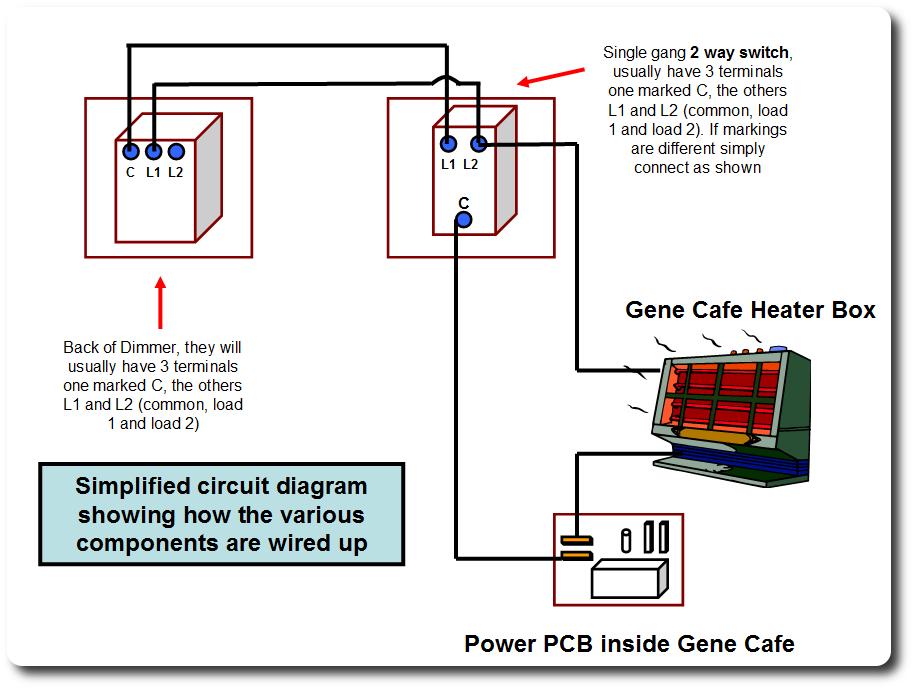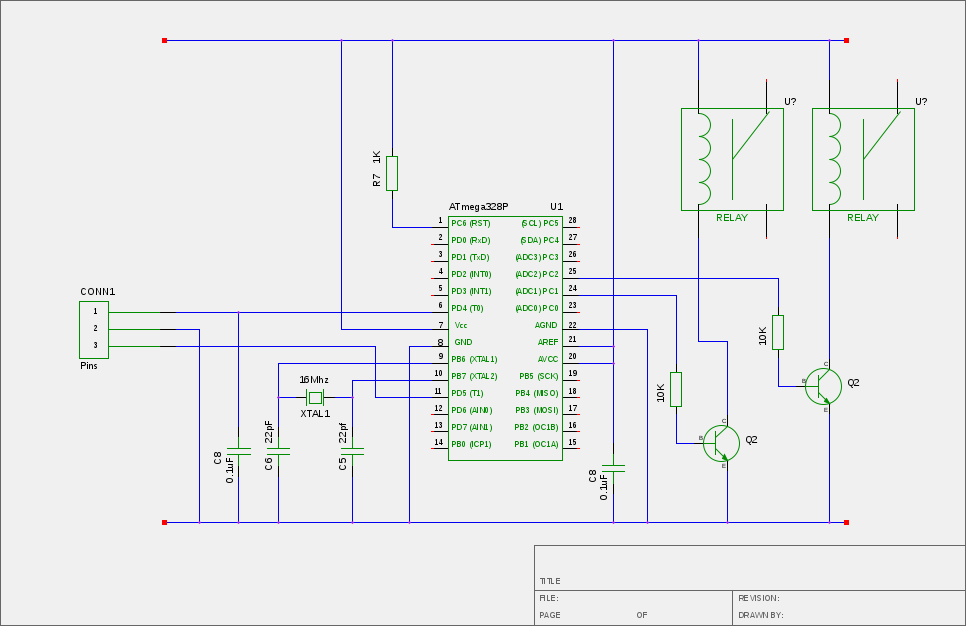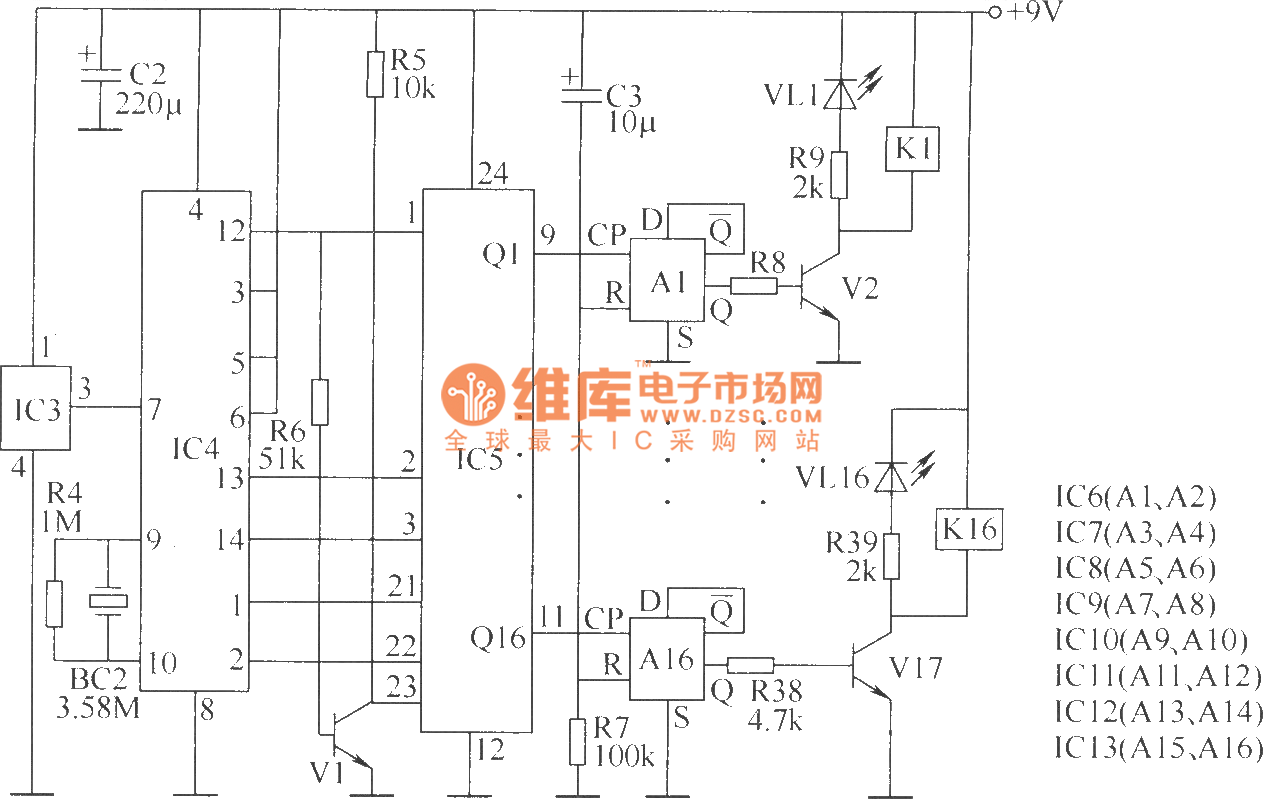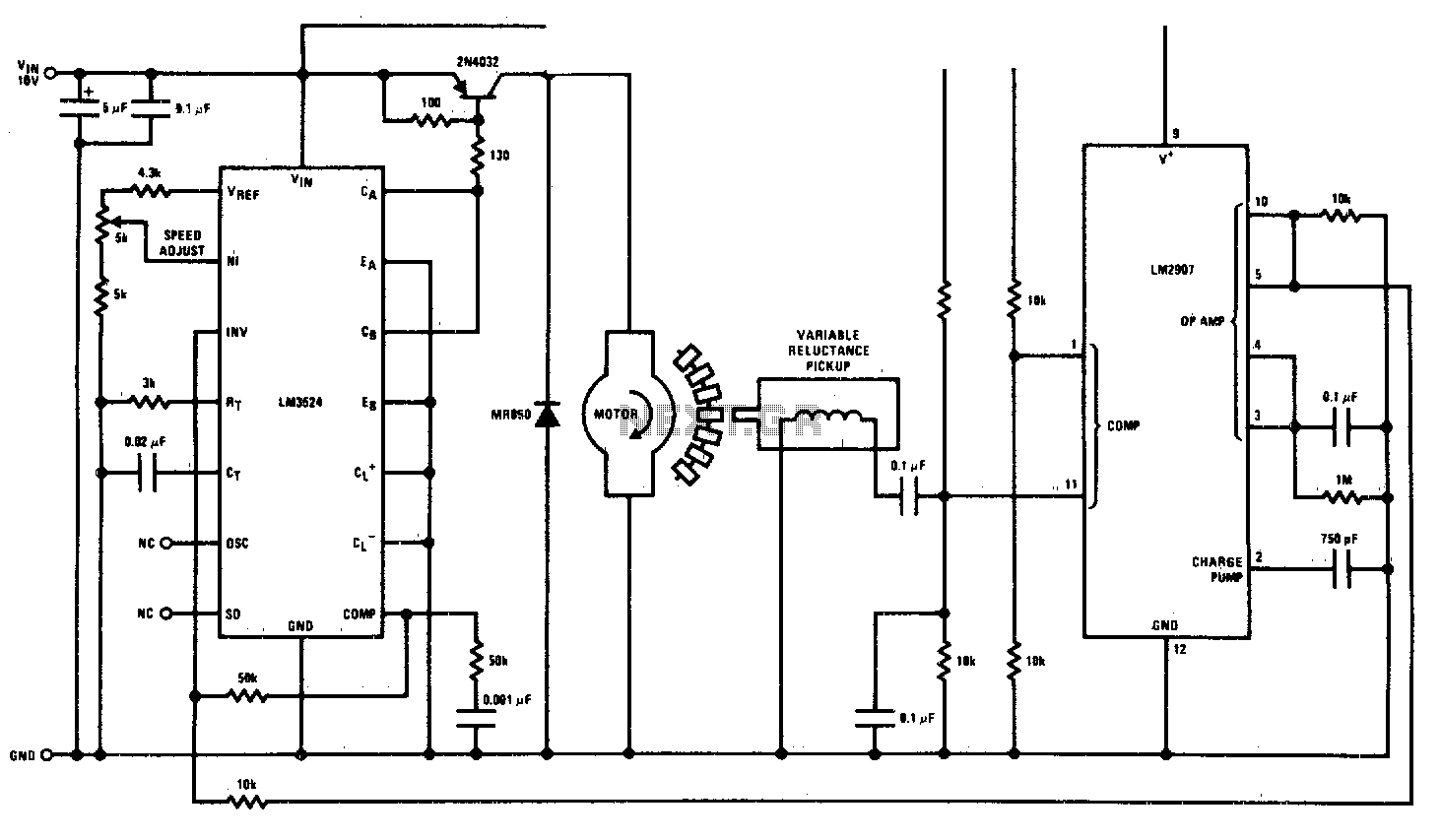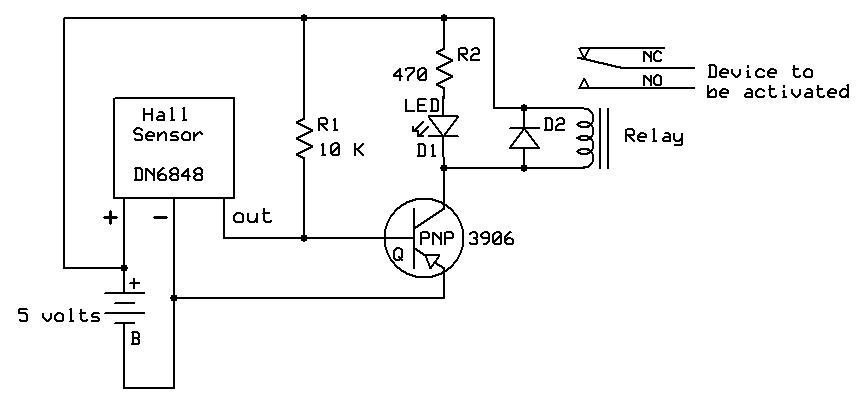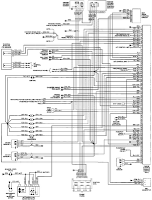
Railway Turnout Control

The following circuit illustrates a Railway Turnout Control Circuit Diagram. Features include a logic level in the range of 5 to 12 V, utilized for controlling model railways.
The Railway Turnout Control Circuit is designed to manage the switching of railway tracks, commonly referred to as turnouts or switches, in model railway systems. This circuit typically operates within a logic voltage range of 5 to 12 volts, making it suitable for interfacing with various control systems and components commonly found in model railroading.
The circuit usually consists of a microcontroller or logic IC that generates the control signals necessary to actuate the turnout mechanism. The control signals are sent to a relay or a transistor switch, which in turn powers the turnout motor or actuator. The design may also incorporate feedback mechanisms, such as limit switches, to confirm the position of the turnout, ensuring accurate operation.
Additional features may include LED indicators to show the status of the turnout, as well as protection components such as diodes to prevent back EMF from damaging the control circuitry. The circuit can be expanded to include multiple turnouts and can be integrated with more complex control systems, such as those utilizing digital command control (DCC) protocols, allowing for sophisticated operation and automation of model railway layouts.
In summary, the Railway Turnout Control Circuit is a crucial component for model railway enthusiasts, providing reliable and efficient control over track switching, enhancing the overall functionality and enjoyment of the railway system.escriptipn: The following circuit shows about Railway Turnout Control Circuit Diagram. Features: logic level in the range of 512 V, used to control model .. 🔗 External reference
The Railway Turnout Control Circuit is designed to manage the switching of railway tracks, commonly referred to as turnouts or switches, in model railway systems. This circuit typically operates within a logic voltage range of 5 to 12 volts, making it suitable for interfacing with various control systems and components commonly found in model railroading.
The circuit usually consists of a microcontroller or logic IC that generates the control signals necessary to actuate the turnout mechanism. The control signals are sent to a relay or a transistor switch, which in turn powers the turnout motor or actuator. The design may also incorporate feedback mechanisms, such as limit switches, to confirm the position of the turnout, ensuring accurate operation.
Additional features may include LED indicators to show the status of the turnout, as well as protection components such as diodes to prevent back EMF from damaging the control circuitry. The circuit can be expanded to include multiple turnouts and can be integrated with more complex control systems, such as those utilizing digital command control (DCC) protocols, allowing for sophisticated operation and automation of model railway layouts.
In summary, the Railway Turnout Control Circuit is a crucial component for model railway enthusiasts, providing reliable and efficient control over track switching, enhancing the overall functionality and enjoyment of the railway system.escriptipn: The following circuit shows about Railway Turnout Control Circuit Diagram. Features: logic level in the range of 512 V, used to control model .. 🔗 External reference
